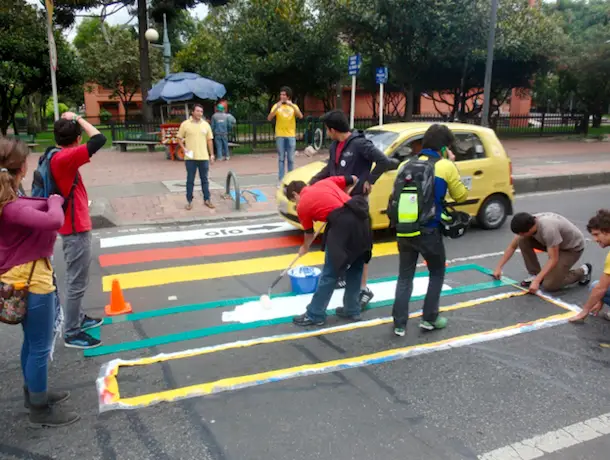There is a suggestion that the contemporary models conceived for ‘creative’ urban regeneration are ones that lend themselves to the UK’s neoliberal framework of urban policy, policies that favour free markets and free trade, and ultimately promote private sector involvement in London’s ‘creative’ and cultural communities.
Culture is increasingly being seen as the magic substitute to policy makers for the lost factories and warehouses of the deindustrialized city. This cultural turn in terms of the cities economy can be seen as a kind of policy Juggernaut akin to a virus that quickly spreads from area to area – with the creative and cultural industries at it’s epicentre.
The core argument I put forward is not that urban creativity is bad thing, but that the current script and nascent practices of urban creativity have provided a hook from which the neoliberalized and entrepreneurialized city can attach existing policies and exploit creative individuals.
The current script of urban creativity is often thought to be attributed to the work of Richard Florida, who argues that a cities approach to policy should be driven by the need to obtain the ‘creative classes’ – a finite group of young creative individuals who, in theory, attract large creative businesses to the city. In reality Florida’s argument leaves cities fighting between each other in an attempt to harness this finite resource through conspicuous self-promotion. However it is becoming increasingly common to find this idea intertwined within urban regeneration policy, providing a ‘soft’ policy fix for the neoliberal city that can be implemented by a local authority at a low cost.
More importantly to note however is that these ideas promote an agenda, which is non-disruptive to existing neoliberal ideals. It is my argument therefore that this quest for the ‘creative class’ is often a route to policy-led gentrification – making room for cultural and creative industries by regenerating large, undesirable areas of inner city London.
Since 2000 the London Development Agency (LDA) has launched numerous projects and initiatives to stimulate and grow London’s creative industries. Indeed, to the neoliberalized city, these creative industries represent the new economic force within the urban environment. The premise is simple; make an area attractive to the right creative people, harness their creativity through the growth of creative industries and harvest the financial benefits. But how is this achieved?
At the very basic level there are arguments that even the introduction of cycle lanes and bike docks represent regeneration for the creative classes. Indeed Richard Florida argues that the bicycle is ‘the’ symbol of creative individuals, and therefore making a city sympathetic to cyclists is a means to attract the creative class. On a much larger scale the regeneration of London’s former industrial centres into ‘cool’ places to see and be seen, also represent a non-disruptive creativity ‘fix.’
For example, The Tate modern in many respects underlines the convergence of neoliberal development and the creative industries, fitting the creativity script of gentrification and regeneration. The very nature of the buildings conversion from power station to London’s center for modern art represents a transition from industrial lead development to culturally lead redevelopment. This coupled with significant private sector investment to the surrounding area, makes it an attractive center for the convergence of the creative classes.
Whilst the Tate represents a large spectacle of creativity much like the Guggenheim does in Bilbao, we might look to areas such as Shoreditch and Hoxton for the real example of creative gentrification. The rapidly increasing displacement of artists from these areas over the past few years indicates a hold on the artistic core by a form of entrepreneurialized creativity. Where there were once studios, squats and available housing there are now trendy bars, coffee shops and art galleries with names so ambiguous you can hardly pronounce them.
By this I suggest that the artists who moved to East London because of cheap rent and available space have now been exploited to the point that they can no longer afford to live there. These artists started the first wave of creative gentrification by creating an edgy artistic environment, which in turn attracted the creative industries. As such these industries have regenerated the once undesirable East End with the help of creative policies and business structures much like the current development of the Art Hotel in Shoreditch. Indeed you can now pay for a ‘graffiti walk’ around Shoreditch to see you favorite works of open-air street art – ludicrous when you consider the context of graffiti in contemporary society.
The government and businesses identify this process as the process of creative regeneration, desirable because it solves the problem of ‘undesirable’ inner city London. However it is becoming more and more evident to urban researchers that in harnessing creativity you essentially alienate the creative individuals and force a policy lead gentrification of inner city London.
Tom Marshall-Potter is an MSc student in the department of Geography at UCL. Tom holds a BSc in Geography from Oxford Brookes University and centres his research around Mobilities, Economics and the Urban Environment.
Photo: mapeye


